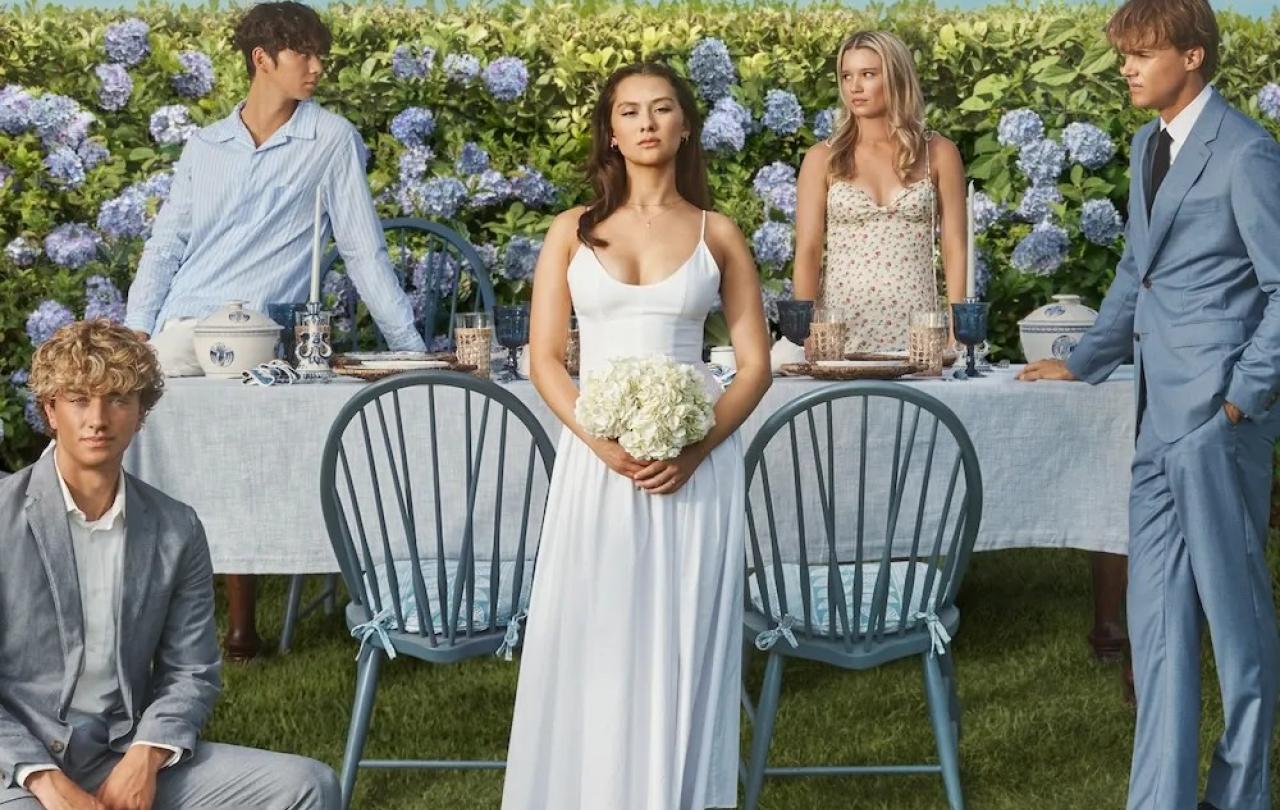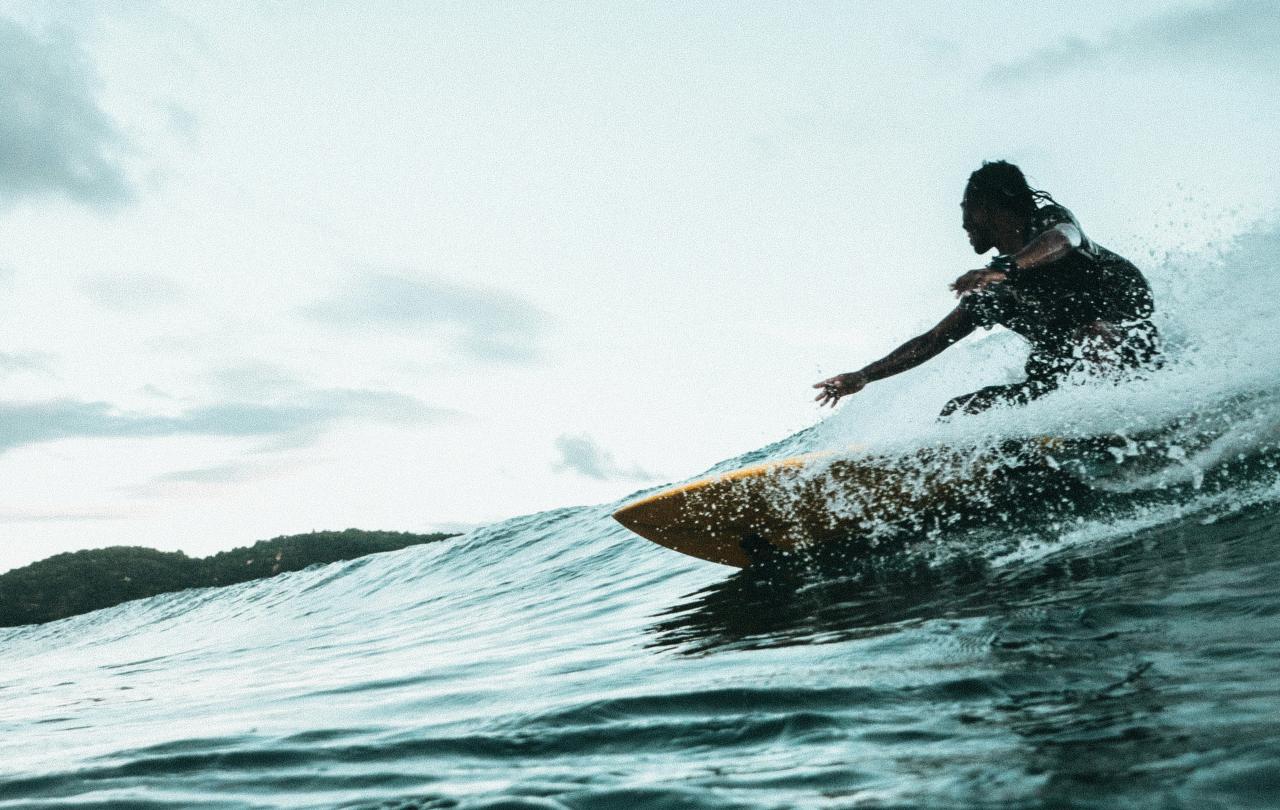
A new communal rhythm has been unearthed over the hazy summer months, a fresh ritual has made its home among us. Every Wednesday, twenty-five million people are tuning into Amazon Prime’s The Summer I Turned Pretty. This show, an adaptation of Jenny Han’s novel of the same name, tells the story of ‘Belly’ – a young-ish girl who spends her summers staying with family friends at their beach house in the fictional yet notably Hamptons-esque town of Cousins Beach.
It has all the ingredients of a wistful watch:
A summer that we can vicariously bask in – tick.
An absurdly chic beach house – tick.
Two love interests who happen to be brothers and also happen to be tremendously easy on the eye – tick and tick.
It’s time for me to lay my cards on the table, if it wasn’t already obvious, I am one of those 25 million people tuning in.
Every darn Wednesday.
I find the pull that this (OK, I’m going to say it… don’t hate me…) undeniably silly show has on us fascinating. I’m acutely aware that it’s been crafted to hit all the right notes, it is a masterclass in escapism. The show’s writers’ room probably had a tick-list of binge-ability traits plastered on the wall, the writers adhering to each one thoroughly. But there’s also something about our insatiable appetite for romance that shouldn’t be dismissed with an eyeroll. We are romantically-inclined beings, to a notable degree. And, what’s more, we feast on the presumption that romantic love is something that happens to us - some kind of cosmic inevitability, sitting just beyond our control, making fools of our will.
In his essay, ‘Love and Need’, Thomas Merton wrote ‘the expression ‘to fall in love’ reflects a peculiar attitude toward love and life itself – a mixture of fear, awe, fascination and confusion. It implies suspicion, doubt, hesitation in the presence of something unavoidable yet not fully reliable’. While C.S. Lewis similarly speaks of its ‘strength, sweetness, terror and high port.’
Thus, our obsession with romantic love takes a hammer to one of our most ingrained lies: that we want, above all else, to be in control. To be the most powerful force in any room. Immovable. Unshakable. It’s hard to keep up the façade that we want to be steady on our feet when we’re endlessly nurturing the idea of being swept off them.
I could, as I have done before, suggest that this is an inherently spiritual matter. It’s a symptom of not believing in God, but craving him nonetheless.
But, alas, my attention has wandered elsewhere.
The Summer I Turned Pretty is currently running through its third series – so, we’re familiar with the love-triangle at this point, the internet has already decided which brother they’re routing for, we’re chomping down our third helping of Belly’s story. And so, what is the extra ingredient added to this third and final series? What’s keeping us on our toes? What’s ensuring that the stakes stay high enough to captivate 25 million of us? Well, interestingly, it’s the prospect of marriage.
Belly getting engaged to one of the brothers truly upped the ante. At the tender age of 21, the show’s supporting characters are less than elated at Belly’s engagement, with whole episodes dedicated to her mother’s desperate - can’t you just live together?! – pleas. Marriage is too huge. Too weighty. Too significant. Nevertheless, Belly and her fiancé defiantly plan a wedding, determined to dedicate themselves to each other in the most consequential way they know how.
And that interests me. the role that marriage still plays in our collective imagination interests me.
This is a way we still imbue our love (even the fictional kind) with the utmost meaning.
All of the data suggests that we are falling rapidly out of love with the very concept of marriage. In 2022, the UK’s Office for National Statistics told us that – for the first time ever – less than 50 per cent of people in the UK (above the age of 16) were married. And, of course, the minority who are married famously have a fifty-fifty percent chance of staying that way. You could make a robust argument that our society is pretty disenchanted with the whole institution.
And yet, we seem to keep suspending that disenchantment. The Summer I Turned Pretty’s popularity is exhibit A. Exhibit B is Taylor Swift’s obscenely newsworthy engagement announcement. This August, she posted a collection of photos of her and her new fiancé, Travis Kelce, quaintly captioned ‘your English teacher and your gym teacher are getting married’. Her words alluding to her songwriting and Kelce’s football career. Journalist, Helen Lewis, notes the ‘defiant conventionality’ of it all. A defiant conventionality that is also woven into Belly’s rebellion – her audacity to rebel against her parents’ wishes and… get married.
It's all just left me wondering, as old-fashioned as it sounds – is there anything more romantic than marriage? Is it ever fully dis-enchant-able? I guess I’m just struck by how it’s still something we do, you know? We are meaning-making creatures, and this is a way we still imbue our love (even the fictional kind) with the utmost meaning.
We bind ourselves to someone else; perhaps defying our survival instincts in the process (it’s certainly the case that unmarried women live longer). It’s costly, it’s hard, it has a certain prodigality about it. Henna Cundill thoughtfully studies marriage as a ‘much slower kind of martyrdom, a decision made not once but daily, in a society where such decisions are frequently undone’. We lay our lives down for something that is bigger than us. It’s a weird human idea, if you think about it. So odd, in fact, that I’m confident in my inkling that it isn’t a human idea at all. It’s dripping with sacrality.
This really has been the summer we turned romantic. Well, 25 million of us, at least.
Support Seen & Unseen
Since Spring 2023, our readers have enjoyed over 1,500 articles. All for free.
This is made possible through the generosity of our amazing community of supporters.
If you enjoy Seen & Unseen, would you consider making a gift towards our work?
Do so by joining Behind The Seen. Alongside other benefits, you’ll receive an extra fortnightly email from me sharing my reading and reflections on the ideas that are shaping our times.
Graham Tomlin
Editor-in-Chief





